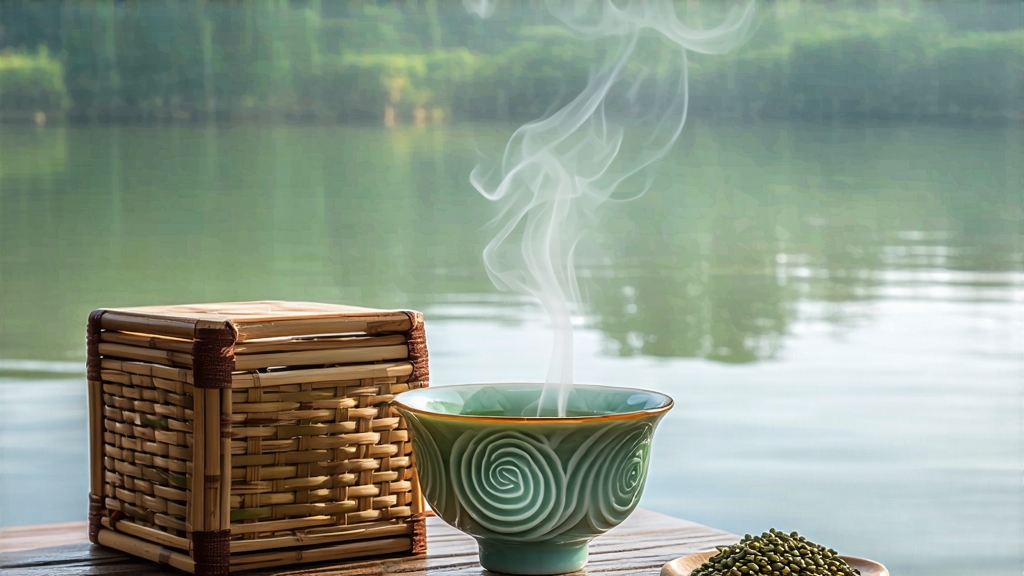
Among the jade-colored constellation of Chinese green teas, few names sound as lyrical as Biluochun—literally “Green Snail of Spring.” To the uninitiated ear it evokes a tiny creature waking from winter hibernation; to the seasoned palate it is a cup of mist, orchid and lake breeze captured in a single curl. Originating from the Dongting mountain range that rises out of Lake Tai in Jiangsu Province, Biluochun has for three centuries been the favored morning elixir of scholars, emperors and, today, global tea aficionados who chase the first spring spirals across time zones.
Historical whispers place the tea’s birth during the late Ming dynasty, when a tea picker, startled by the sudden fragrance of wild tea shrubs growing among peach and plum trees, stuffed the aromatic leaves into her bosom. The warmth of her body accidentally “fixed” the green, releasing an unprecedented perfume. Local monks refined the accidental discovery into a deliberate craft, and by the Kangxi reign (1662-1722) the imperial court had placed it on the tribute list. Legend claims the emperor, struck by its snail-like roll and jade-green hue, rechristened the originally vulgar “Xia Sha Ren Xiang” (Scary-Fragrance) into the elegant Biluochun. Whatever the truth, the name stuck, and with it the tea’s reputation as one of China’s Ten Famous Teas.
Strictly speaking, only leaf plucked within a 10-km radius of Dongting’s East and West mountains can claim the protected title “Lake Tai Biluochun.” Yet the cultivar itself—an early-sprouting, small-leaf Camellia sinensis var. sinensis—has migrated to Sichuan, Guizhou and even Zhejiang, giving rise to offshoot styles. Purists divide the genuine terroir into two micro-categories: Dongshan (East Mountain) grown on sun-facing, quartz-rich slopes cooled by lake mist; and Xishan (West Mountain) grown on slightly higher, clay-loam terraces where fruit trees interlace the tea gardens. The former yields a creamier body reminiscent of fresh soy milk; the latter a sharper, orchid-like top note. Both, however, must be picked before the Qingming festival (early April) when only the bud and the unfolding first leaf qualify as “Special Grade.” One kilogram of finished tea demands 60 to 80 thousand such shoots, all plucked at dawn while dew still pearls the lake mist.
The crafting choreography that follows is a duet between hand and fire unchanged since imperial days. Withering is skipped; instead, the just-plucked shoots are spread in bamboo trays no thicker than two centimeters and allowed to breathe for two hours, letting grassy volatiles dissipate. The critical kill-green (shaqing) happens on a drum-shaped pan heated to 180 °C. A master fryer tosses 250 g of leaves with bare hands, clapping them against the metal to rupture epidermal cells while preserving the bud’s integrity. Within three minutes the leaf temperature is coaxed above 80 °C, deactivating polyphenol oxidase and locking in the jade color. Immediately the heat is dialed down to 70 °C and the real shaping begins: a spiral press-roll motion performed by wrist and finger pads, curling the leaf into a tight snail shell while moisture drops from 75 % to 30 %. The final drying stage is almost meditative—50 °C for twenty minutes, during which the operator repeatedly “strings” the tea along the pan’s rim, polishing the surface until white downy tips become visible like frost on early spring grass. When cooled, the finished tea emits a fragrance so intense that experienced graders can detect whether the batch was fried on a humid or dry morning simply by the sweetness of its bouquet.
Brewing Biluochun is an exercise in restraint. Its cell structure remains fragile; water that is even slightly too hot will cook the bud, turning the liquor muddy and bitter. The classic Jiangsu method calls for a tall, pencil-thin glass—transparent so that the “tea dance” can be observed. Three grams of leaf (roughly a heaping teaspoon) are dropped onto the glass bottom, then 80 °C water is poured to one-third height, allowing the spirals to hydrate and sink. After thirty seconds the glass is topped up, and the leaves begin their slow unfurl, releasing fine hairs that shimmer like plankton